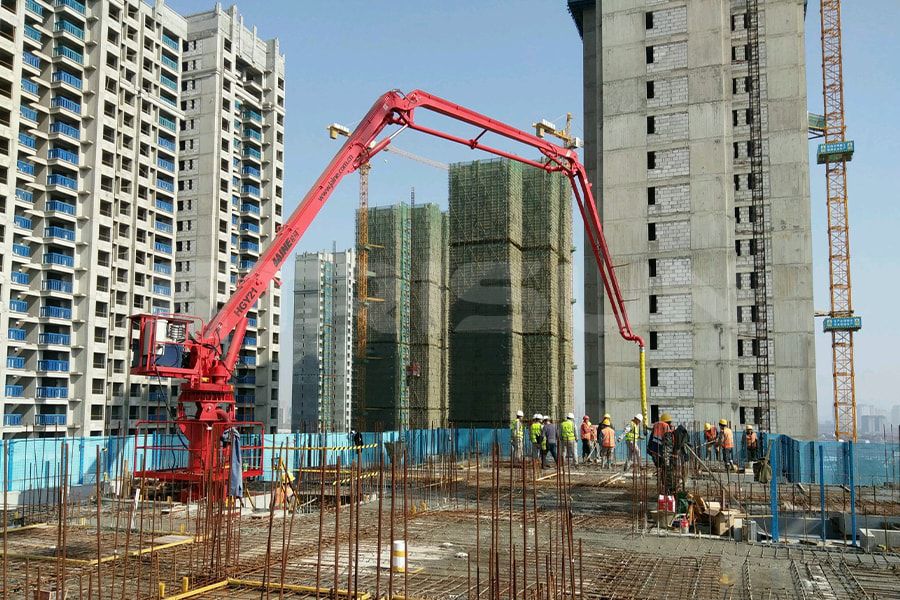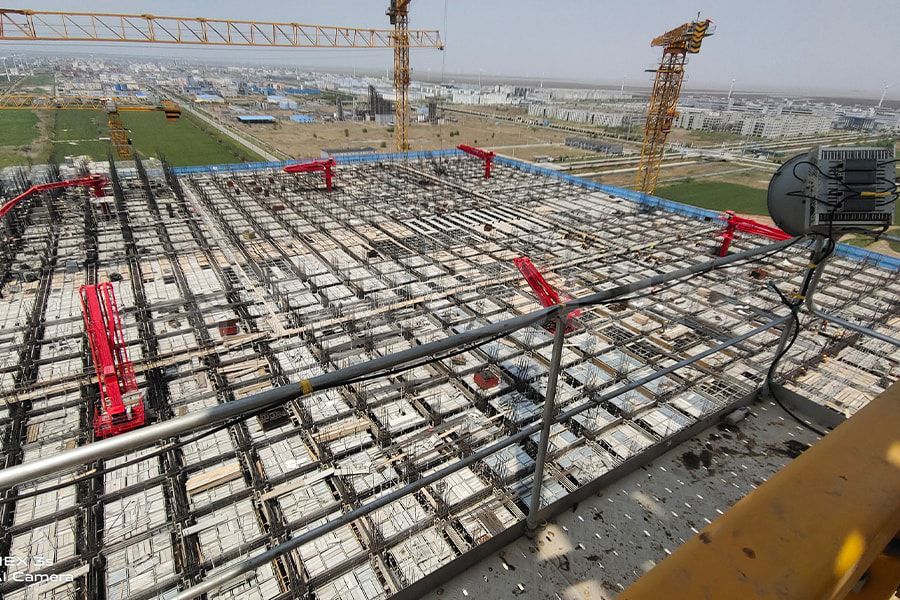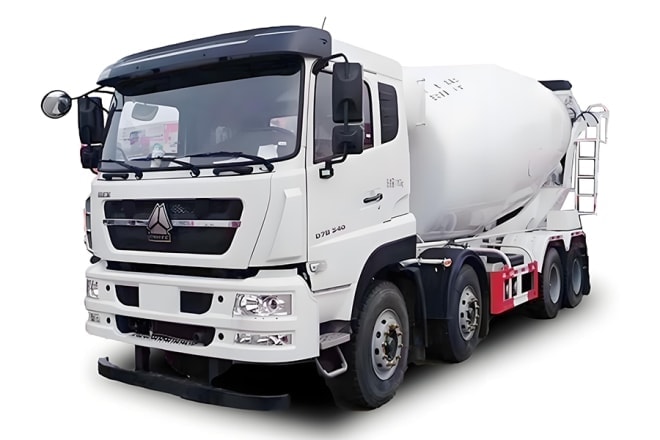
- Features & Properties
- Technical Specification
- Gallery
- Related Products
1. Fixed position: The inner-climbing concrete placing tower can be installed in the elevator shaft or on the floor, and can rise as the floor rises.
2. Reducing distractions: When the placing tower is installed in the elevator shaft, large-area pouring can be achieved without affecting the work of other floors.
3. Easy to use: It can be controlled by wireless or wired remote control, which reduces the waste of labor resources and reduces the difficulty of construction to a certain extent.
4. Self-climbing: It is equipped with a hydraulic self-climbing device, which means it can automatically climb without frequent lifting.
5. High safety: With its own climbing mechanism, there is no need to manually operate the support structure repeatedly, which is safe and reliable and prevents other accidents.
6. High efficiency: The rotating tower can rotate 360° and can easily bypass obstacles for distribution, which greatly improves the pouring quality and enables continuous pouring.
| Model | TDH17 | TDH21 | TDH24 | HGY28 | HGY32 | HGY33 |
| Placing radius | 17m | 21m | 24m | 28m | 32m | 33m |
| Flexible tube length | 3m | 3m | 3m | 3m | 3m | 3m |
| Tube inner diameter | 125mm | 125mm | 125mm | 125mm | 125mm | 125mm |
| Rotation angle | 360° | 360° | 360° | 360° | 360° | 360° |
| Hydraulic system power | 5.5kW | 5.5kW | 11kW | 11kW | 15kW | 15kW |
| Working pressure | 20Mpa | 22Mpa | 20Mpa | 20Mpa | 15Mpa | 15Mpa |
Note: All features, functionality and other product specifications are subject to change without notice or obligation.












 JBT Concrete mixer with pump
JBT Concrete mixer with pump
 HBT Concrete pump
HBT Concrete pump
 CM Concrete mixer truck
CM Concrete mixer truck
 HGY Mobile concrete placing boom
HGY Mobile concrete placing boom
FAQ
Q: What is the climbing principle of the inner-climbing concrete placing tower?
A: It can be simply understood as the "climbing" of a machine. The details are as follows:
1) Traction mechanism starting: It needs the help of a traction mechanism to move, so the motor needs to be started first.
2) Roller movement: After starting the motor, the traction mechanism drives the roller to roll.
3) Boom pulling: After the roller rolls, the boom is pulled onto the roller to climb upward.
4) Hydraulic system control: When the roller reaches a certain height, the hydraulic system will control the roller to stop slowly so that the concrete placing tower on the desired floor.
5) Parking position correction: After the roller stops, the machine performs position correction to keep the concrete placing tower in the correct position.
Q: What are the installation sequence and steps of the inner-climbing concrete placing boom?
A: The main installation sequence is as follows: Preparing the installation site → Installing the chassis → Installing the tower→Installing the climbing frame → Installing the boom assembly→Connecting the pipes→Wiring and debugging the electrical system → Pressure test and debugging of hydraulic system → Debugging and trial operation of the whole machine.
Q: What conditions and precautions are required for the installation of an hydraulic inner-climbing concrete placing tower?
A: Since the inner-climbing hydraulic concrete placing tower is heavier than the traditional concrete placing boom, we must meet the installation conditions before we install it:
1) Floor bearing capacity. The load-bearing capacity of the floor is closely related to the installation of the placing tower. If the load-bearing capacity is insufficient, it may cause the floor to collapse.
2) Tower crane lifting capacity. TRISUN adopts a segmented quick link method to allow equipment to be hoisted in batches. However, the core parts are still relatively heavy, so TRISUN will provide weight data and hoisting data.
3) Staffing. It usually takes about 3 people to assist in the installation of the equipment.
4) Safety. No construction workers are allowed under the equipment during debugging.
Q: What are the safety operating instructions for inner-climbing hydraulic concrete placing tower?
A: In order to improve construction safety and efficiency, safety instructions should be followed at all times during installation and construction, and operations should be performed according to the TRISUN inner-climbing hydraulic concrete placing tower operating instructions.
1) The concrete placing tower should be kept at an appropriate distance from high-voltage lines and electrical appliances.
2) When the wind speed exceeds Level 6, it is strictly prohibited to operate the concrete placing tower; when the wind speed exceeds Level 4, it is strictly prohibited to install and dismantle.
3) No one is allowed to stand under the boom when the concrete placing tower is working.
4) The end hose must be tied with a safety rope. It is prohibited to use end hoses longer than 3 meters. Do not insert hoses into poured concrete. Work strictly according to the placing scope.
5) The hydraulic system pressure shall not exceed 25Mpa.
6) It is strictly prohibited to remove the end hose and connect the boom to another rigid pipe.
7) It is strictly prohibited to open the joint when there is pressure in the concrete pipe and oil pipe.
8) During inspection or maintenance, the power supply on the ground should be cut off, and maintenance with power on is not allowed.
9) During the rotation process, it is strictly prohibited to brake or run in reverse when the whole machine has not stopped; The pipe clamp of the joint at the rotation point should not be fixed too tightly to ensure flexible rotation; The rotary joint pipe clamp seal must be cleaned and lubricated once every shift.
10) Once the concrete pipe is blocked, you should stop pumping first, check the blocked pipe, remove the pipe, clean it and then reinstall it firmly, clean the seal and prepare to reset it.
11) The boom should be balanced and locked when lifting, and the nozzle should be prevented from biting your hands when assembling.
12) At the end of the work, the boom must be folded, the safety hook must be hung, the boom must be placed horizontally, and the ground power supply must be cut off.


